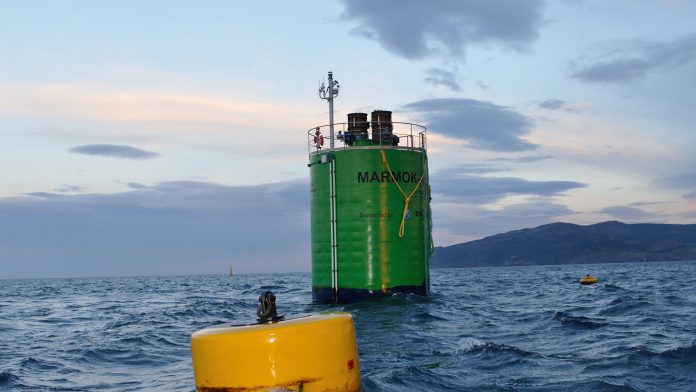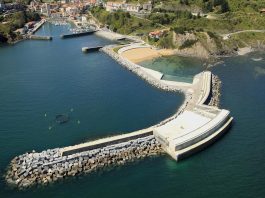The Horizon-2020 VALID project’s wave technology developers discuss the progress made so far in designing a hybrid testing platform for ocean energy technology.
Efficiency, reliability, cost-competitiveness, a more streamlined path to commercialisation – these are the aims of three European wave energy developers whose devices form the core of the Horizon-2020 VALID project, which is developing a hybrid testing platform for ocean energy technology.
Hybrid testing is common practice in many industries, especially the automotive world. It significantly shortens time-to-market while also applying more rigorous demands on performance and reliability, ultimately creating a better product in less time and for less money.
Through VALID (Verification through Accelerated Testing Leading to Improved Wave Energy Design) and its consortium of European partners, this method is being adapted to wave energy for the first time. At the project’s halfway mark, the initial framework for accelerated testing has been established, and the focus now shifts to the technology developers.
We spoke to representatives from each user case – CorPower Ocean Technical Project Manager Ross Harnden, IDOM Advanced Design & Analysis team member Patxi Etxaniz, and Wavepiston A/S Chief Technical Officer Steen Grønkjær Thomsen – to discover their take on implementing hybrid testing methods for wave energy.
What is your device?
CorPower: The CPO wave energy converter (WEC) is a point absorber, with a heaving buoy on the surface absorbing energy from ocean waves, which is connected to the seabed using a tensioned mooring line. Novel ‘phase control’ technology makes the compact devices oscillate in resonance with the incoming waves, strongly amplifying the motion and power capture.
IDOM: The device that IDOM is developing, the MARMOK, is a buoy that captures wave energy with oscillating water column technology. The buoy is a vertical cylinder, open below so that inside it has a column of water. The relative movement of the buoy and the water column creates a variable volume air chamber that is turbined to extract electricity.
Wavepiston: The Wavepiston WEC qualifies as an offshore surface attenuator. The concept is based on capturing the horizontal component of the surge energy using a multitude of horizontal moving energy collectors attached to a common string located just below the water surface.
What are you testing within VALID?
IDOM: Our experience, both in the three winters at sea with the MARMOK-A-5, and in the previous tests in Mutriku, has shown us that one of the most critical elements of our technology is the turbine generator, which is subject to much greater fluctuations than in usual applications.
Wavepiston: The Wavepiston PTO system is based on hydraulic rams sending raw, pressurised seawater to a land-based turbine. The seals of these rams are highly loaded due to both the aggressive environment and the fact that the rams operate at approximately 60 bars. Understanding and reducing wear on these seals is key to Wavepiston’s success.
CorPower: CorPower is focusing on dynamic sealing systems. These are critical components within our system and, by understanding them better, we can improve not only our device’s reliability and survivability, but also its energy performance.
How are you implementing the hybrid testing methodology?
Wavepiston: Our team has created the first version of a numerical model that simulates the movement and pressure variations in the hydraulic rams. We have also designed a physical platform for testing hydraulic rams at realistic speeds and pressures. Upon completion, this will be mounted with a hydraulic ram which will be moved according to the numerical predictions. The platform will feed back performance data, including pressure, leak volume and friction, into the hybrid model.
CorPower: We are currently focussing on upgrading and recommissioning our customised dynamic seal testing rig. With this device, we are able to test various seal designs through accelerated testing to help establish the lifetime of our sealing systems and better understand the range of failure modes. This test rig represents the physical testing part of the hybrid setup, with our Wave-2-Wire model representing the simulated part.
IDOM: Optimising generator size in order to maximise performance and reliability is one of the critical elements in our device design. The VALID project methodology will allow us to carry out accelerated tests with which to better understand the behaviour of the generator in these conditions and its degradation.
What are the challenges and successes so far?
CorPower: One of the major challenges is dealing with scaling effects. In the automotive industry, components tend to be relatively small, so hybrid testing is always done on full-scale components. In the ocean energy sector, components are much bigger. For example, our ocean rods are approximately 9m long and 0.35m in diameter. We are looking into ways to scale down testing, while carefully ensuring it is representative of full-scale components.
IDOM: To carry out these tests under real conditions on a device at sea is enormously complex and expensive. The possibility of carrying out these tests on a test bench, on a scale and in a shorter time, will allow us to know the degradation process of the generator with a detail not attainable under real conditions.
Wavepiston: Our main challenges include lacking computational speed, since true hybrid testing requires a real-time model of the full system running in the background, and feeding motional data to the test-rig while continuously considering values measured in real-time on the test rig. We have completed a Wave-2-Wire model, meaning a model where the actuators are driven by numerical calculations, but we are still not ready to receive feedback from the experimental setup.
What do you hope to achieve through VALID?
IDOM: The knowledge that we are going to obtain from the VALID project will allow us to optimise the use of the generator, making it more efficient and at the same time more reliable.
Wavepiston: The ultimate goals of this project are an improved Wave-2-Wire model, high-quality test results of our pump unit design (useful for both certification and design improvements) and a hybrid test platform that can be further developed to cover other parts of Wavepiston’s wave energy solution.
CorPower: We want to understand our dynamic sealing systems better, as well as establish the basis of a methodology for hybrid testing of ocean energy devices. Ultimately, the VALID project will contribute to an improved understanding of our system, to lower operational and maintenance costs, which will further reduce the levelised cost of energy that we can offer for wave energy.
Please note, this article will also appear in the tenth edition of our quarterly publication.








